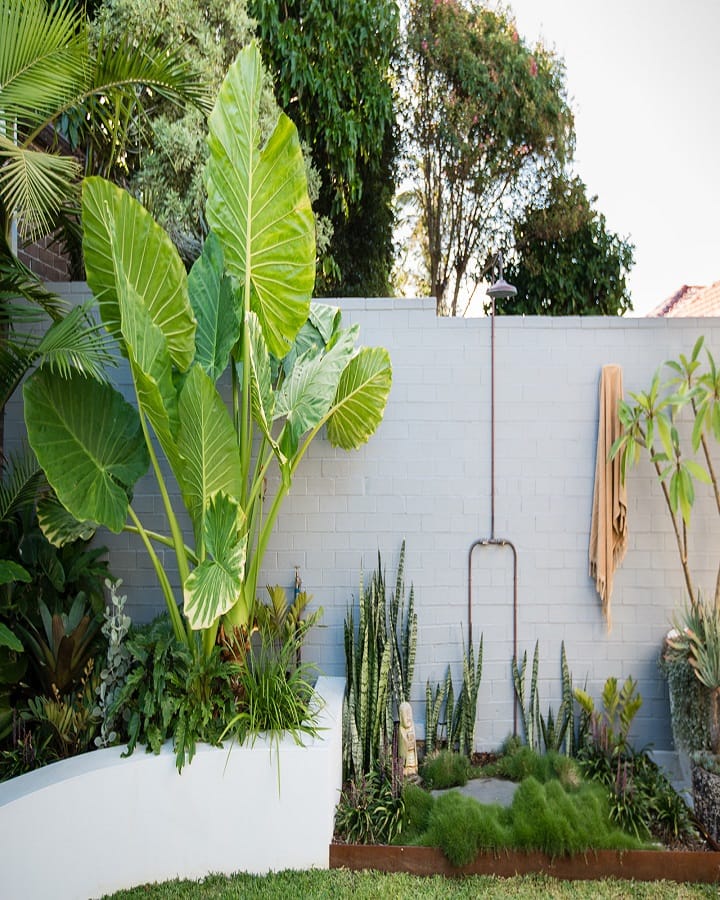
Image Credit – Hema
When you imagine a tropical paradise, lush greenery, bold foliage, and vibrant blooms often come to mind. Tropical planting allows you to bring that exotic, resort-like feeling right into your home garden or even indoor spaces. With their striking leaves, vivid flowers, and ability to create a sense of abundance, tropical plants are the perfect choice for gardeners who want to transform their space into a relaxing oasis. Whether you live in a warm climate year-round or a temperate zone where winters are cold, tropical planting can be adapted to suit your environment with a little creativity and planning.
Tropical Planting: Bringing Exotic Beauty to Your Garden

What Makes Tropical Planting Special?
Tropical planting is all about creating a sense of drama and vibrancy. Unlike minimalistic or desert-style gardens, tropical gardens are characterized by dense, layered planting with plants of varying heights, colors, and textures. Large glossy leaves, brightly colored flowers, and climbing vines bring the lushness of the tropics into focus. These plants not only provide shade and structure but also attract pollinators like butterflies, hummingbirds, and bees.
What makes tropical planting even more appealing is the atmosphere it creates. A well-planned tropical garden can feel like a private getaway, offering both beauty and a calming retreat. The rich greenery cools the environment, and many tropical plants also purify the air, making them beneficial both outdoors and indoors.
Key Plants for a Tropical Garden
Building a tropical garden involves selecting the right mix of plants that can thrive in your region. Some popular tropical choices include:
- Banana plants – Known for their dramatic, paddle-shaped leaves, banana plants add instant height and boldness.
- Bird of Paradise – With their exotic, crane-like flowers, these plants are showstoppers in any tropical setting.
- Palm trees – A symbol of the tropics, palms bring structure and elegance to gardens and patios.
- Philodendrons and Monsteras – Their large, glossy leaves are perfect for creating that jungle-like feel indoors or outdoors.
- Hibiscus – Bright and cheerful, hibiscus flowers bloom in a rainbow of colors, making them ideal for tropical-themed planting.
- Heliconias and Gingers – Known for their dramatic flower spikes, these plants add height, texture, and exotic flair.
For cooler climates, gardeners can still enjoy tropical planting by using hardy tropical-looking plants such as cannas, hostas, or elephant ears, or by growing tender tropicals in containers that can be brought indoors during winter.
Designing a Tropical Garden
Designing a tropical planting scheme is all about layering and variety. Here are some practical tips:
- Layering heights – Place taller plants like palms, bananas, or heliconias at the back, medium plants like hibiscus and ferns in the middle, and groundcovers like caladiums or coleus at the front.
- Mixing textures – Combine broad leaves with feathery foliage for visual interest. The contrast creates the lush, dense appearance tropical gardens are known for.
- Adding color – Incorporate flowering plants or colorful foliage to break up the greenery. Red, orange, yellow, and pink blooms stand out beautifully against deep green leaves.
- Using containers – In temperate regions, plant tropicals in pots for flexibility. You can move them indoors during colder months or rearrange them to refresh the look of your space.
- Creating shade and moisture – Tropical plants thrive in humid, partially shaded conditions. Adding water features, misting plants, or grouping them together can help recreate these conditions.
Caring for Tropical Plants
Tropical planting is rewarding but requires some care. Here are the basics:
- Watering – Most tropical plants like consistently moist soil but not waterlogging. Regular watering, especially in hot weather, is essential.
- Feeding – Tropical plants are heavy feeders. Use organic compost or balanced fertilizers to keep them healthy and blooming.
- Humidity – Indoor tropicals benefit from regular misting or a humidity tray to replicate their natural environment.
- Pruning and cleaning – Remove dead leaves and spent flowers to encourage growth and maintain a tidy appearance.
Bringing the Tropics Indoors
If you don’t have space for a large garden, you can still enjoy tropical planting indoors. Houseplants like monstera, peace lilies, calatheas, and palms thrive in living rooms and offices. Pair them with woven baskets, clay pots, or decorative planters to complete the tropical vibe. Adding a few flowering tropicals such as orchids or bromeliads will make your indoor jungle even more eye-catching.
Tropical planting is more than just gardening—it’s about creating an atmosphere of relaxation, vibrancy, and escape. Whether you’re working with a backyard, balcony, or indoor corner, you can bring the magic of the tropics into your life with the right plants and thoughtful design. With their bold textures, dazzling flowers, and ability to transform any space into a lush haven, tropical plants are the perfect way to turn your home into a personal paradise.
Frequently Asked Questions
What is tropical planting?
Tropical planting is a gardening style that uses lush, large-leaved plants, vibrant flowers, and layered designs to create a jungle-like, exotic atmosphere either outdoors or indoors.
Can tropical planting be done in colder climates?
Yes, tropical planting can thrive in colder regions by growing hardy tropical-look plants or keeping true tropicals in containers that can be moved indoors during winter.
What are the best plants for tropical planting?
Popular choices include banana plants, palms, bird of paradise, hibiscus, heliconias, and monsteras. For cooler zones, alternatives like cannas, elephant ears, and hostas work well.







